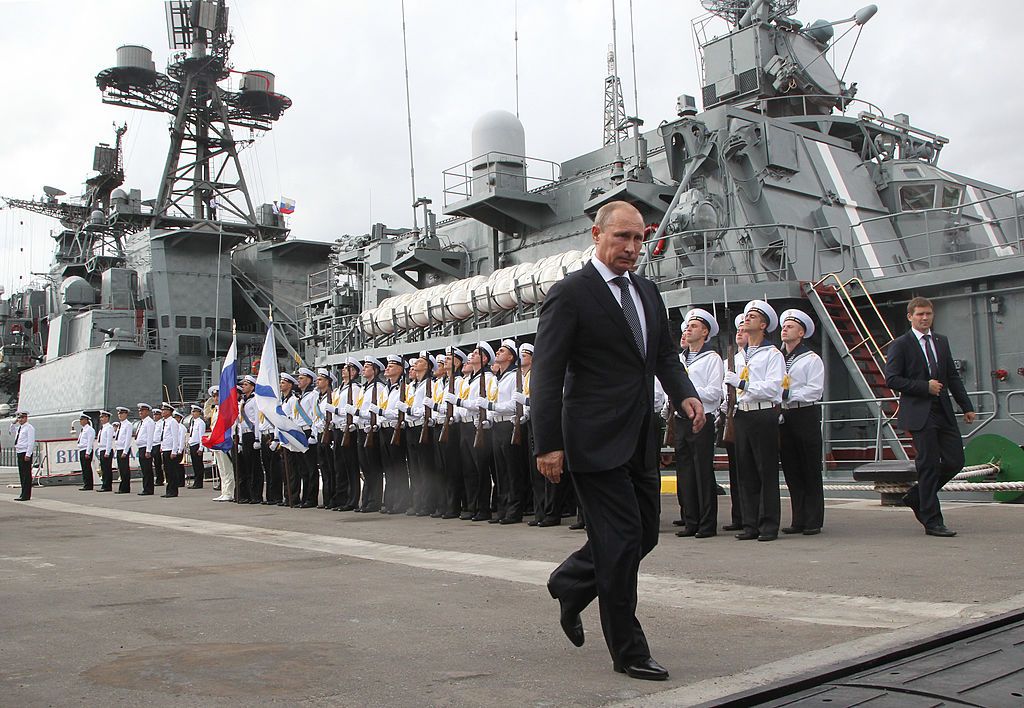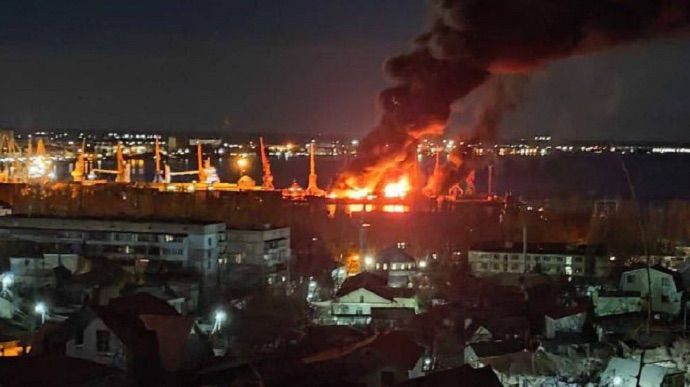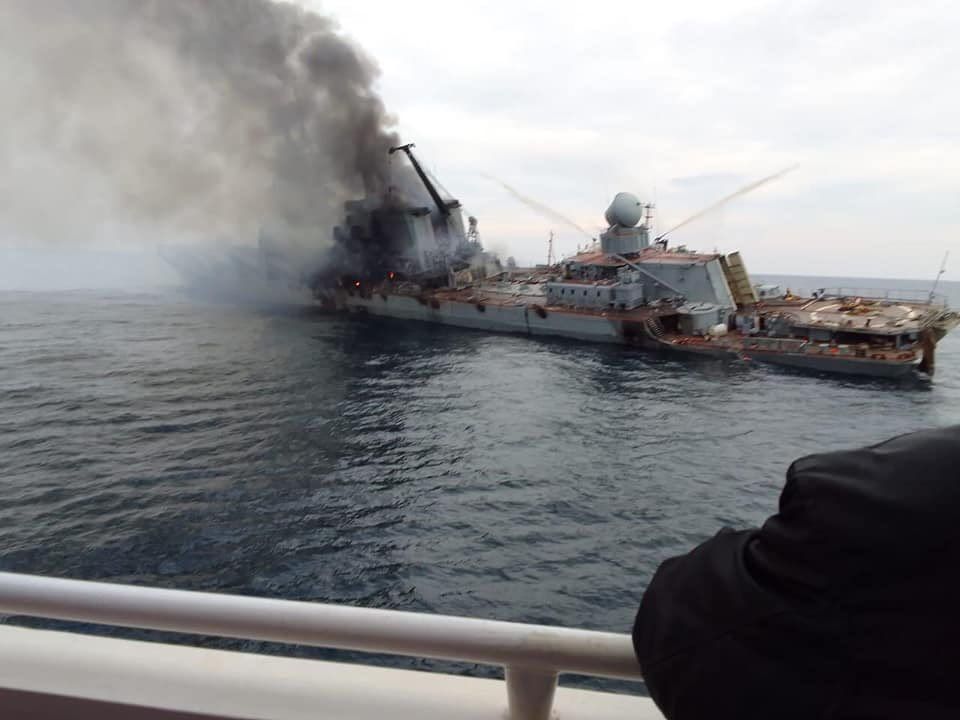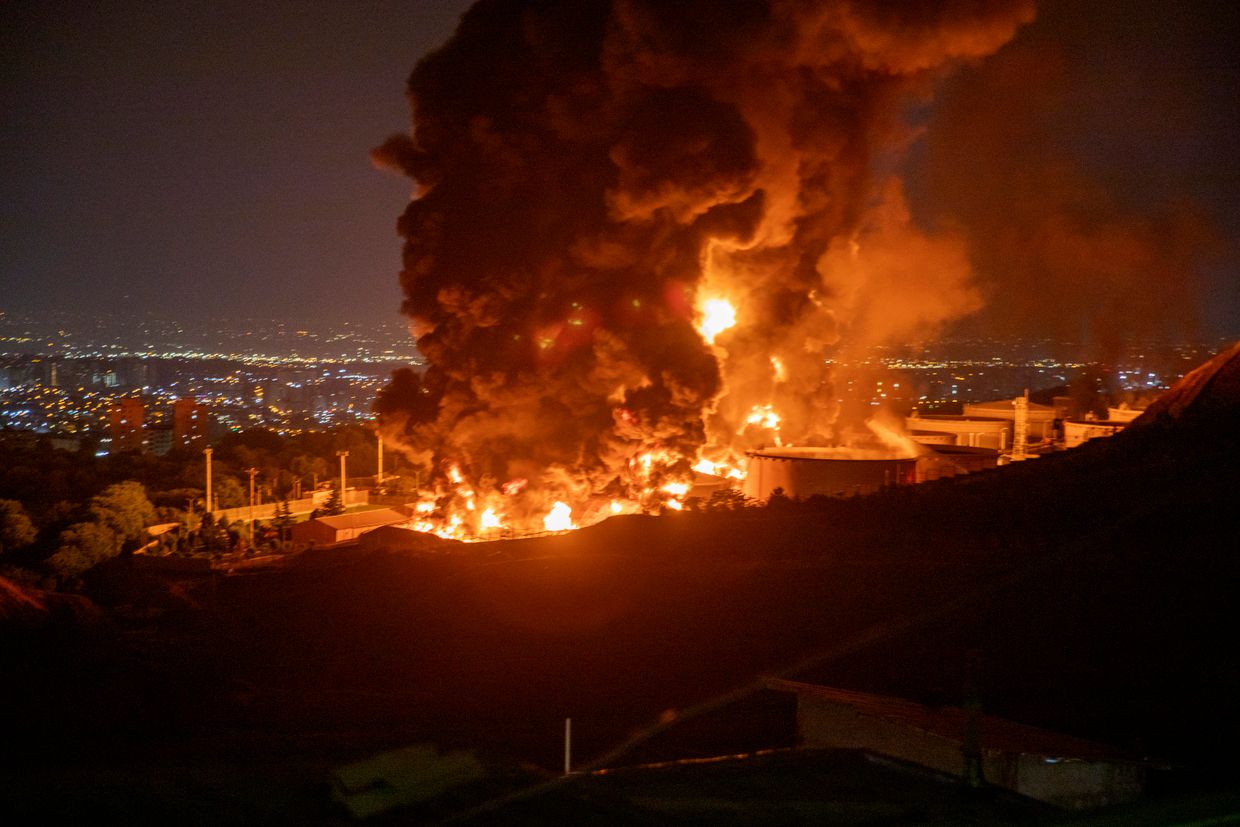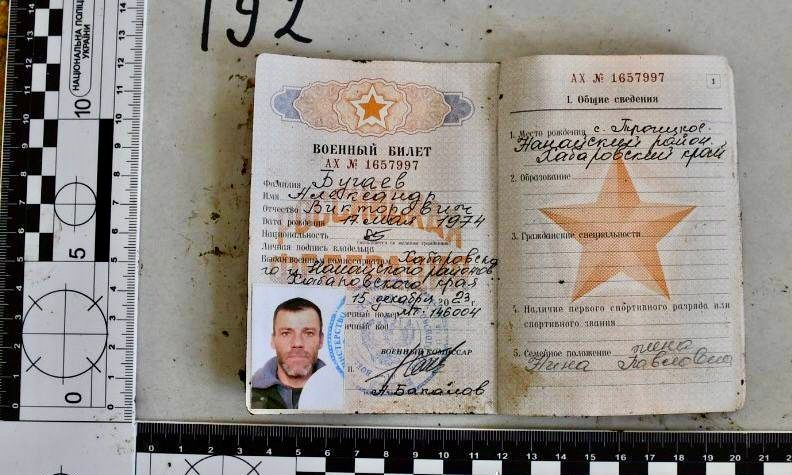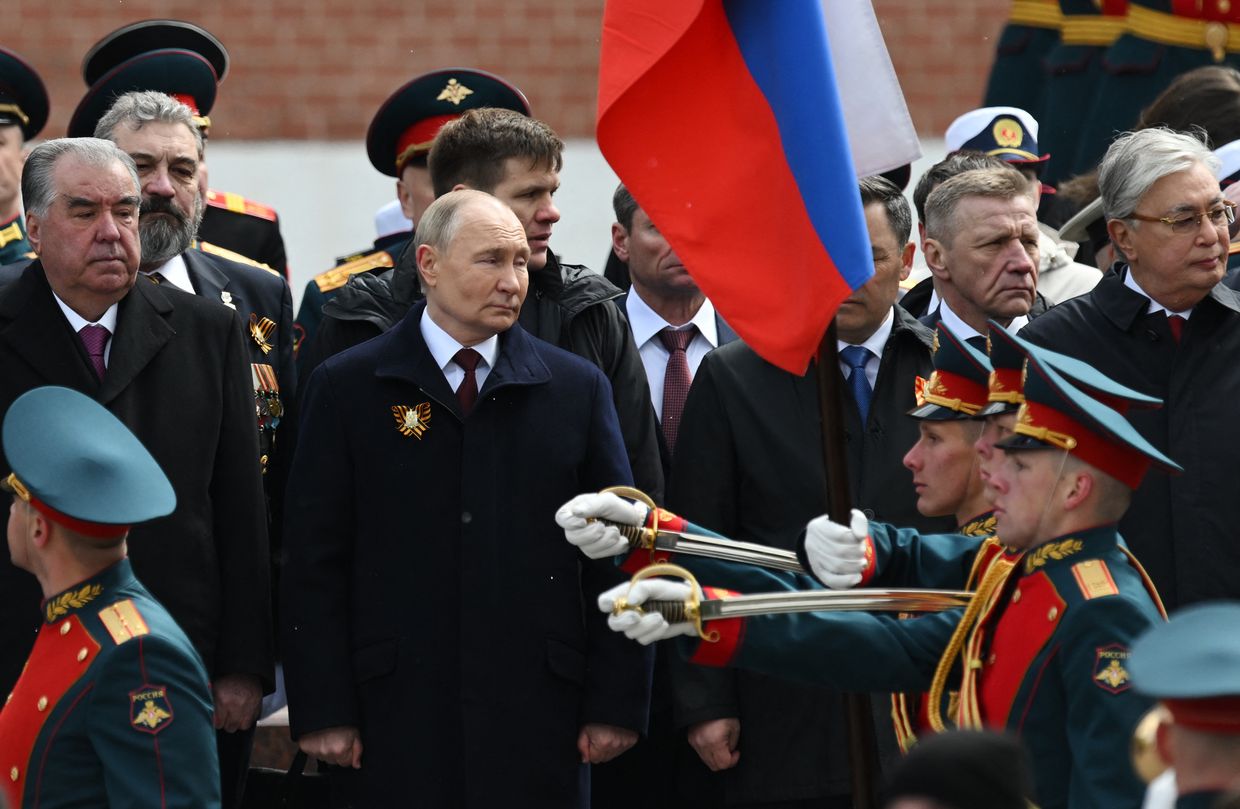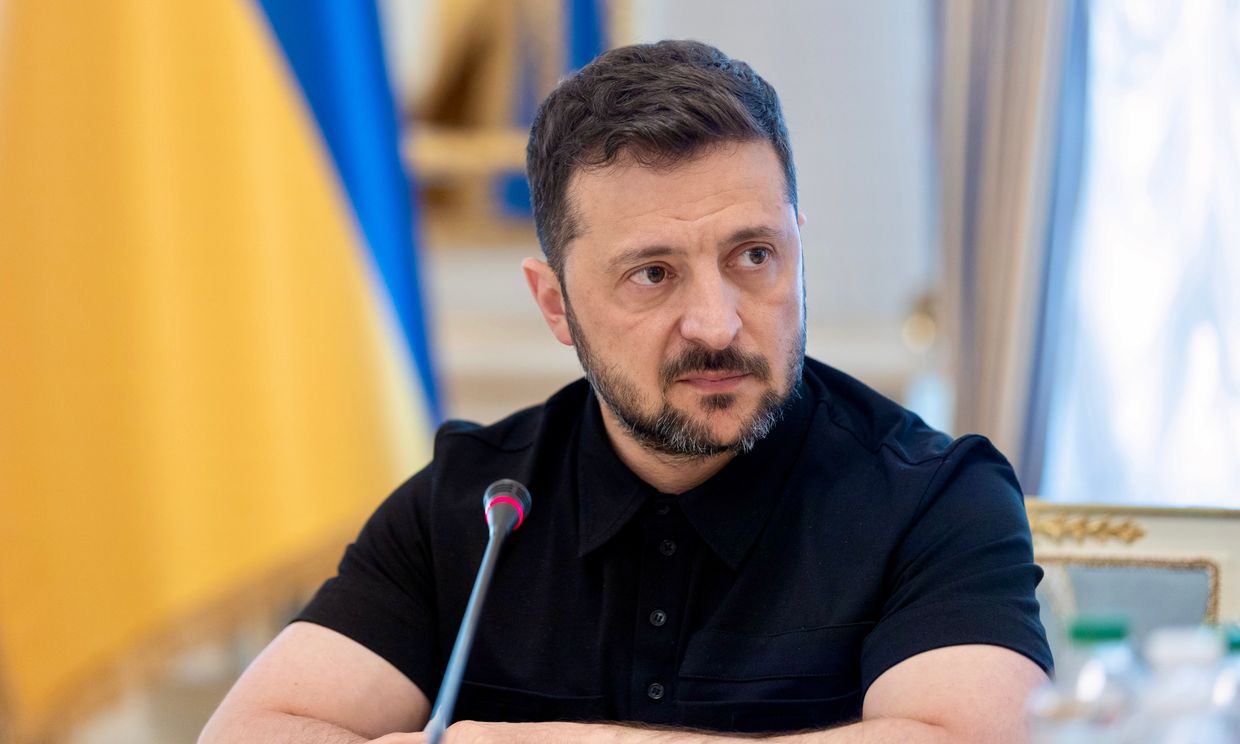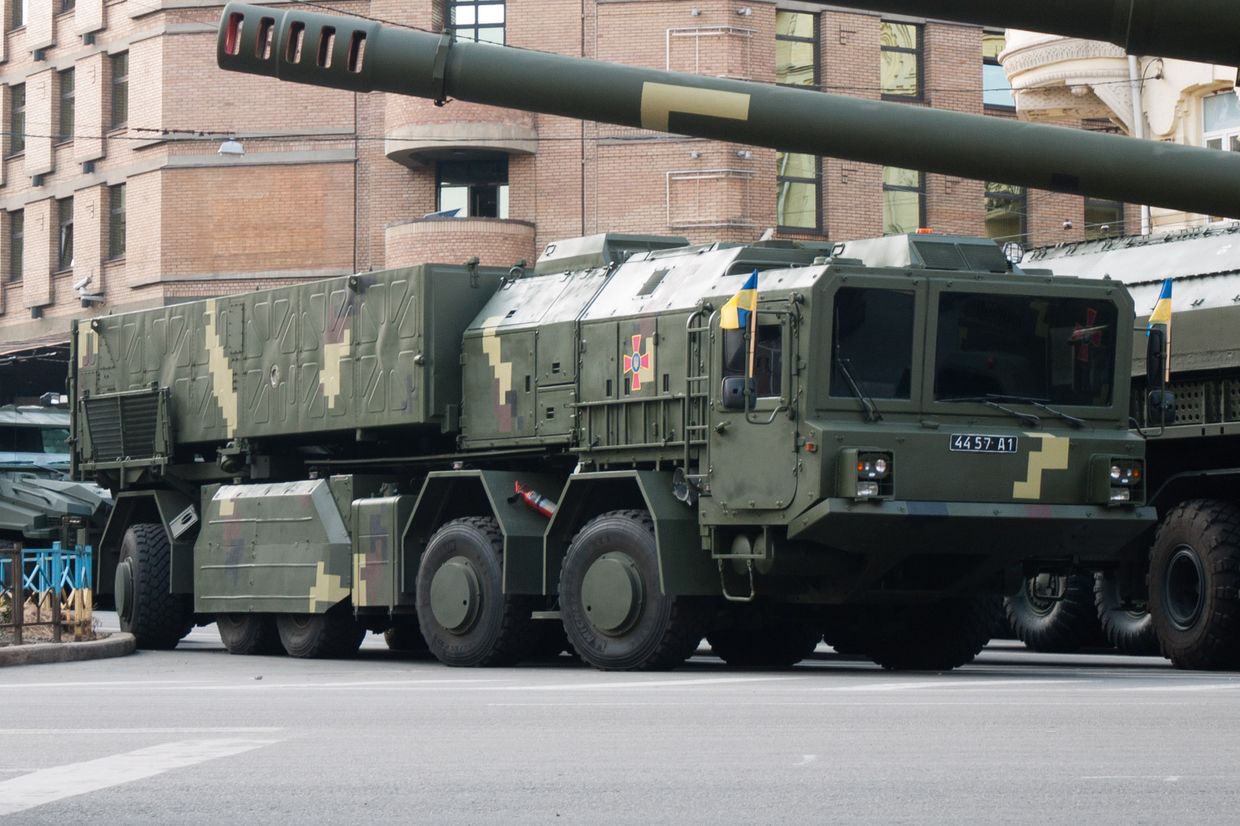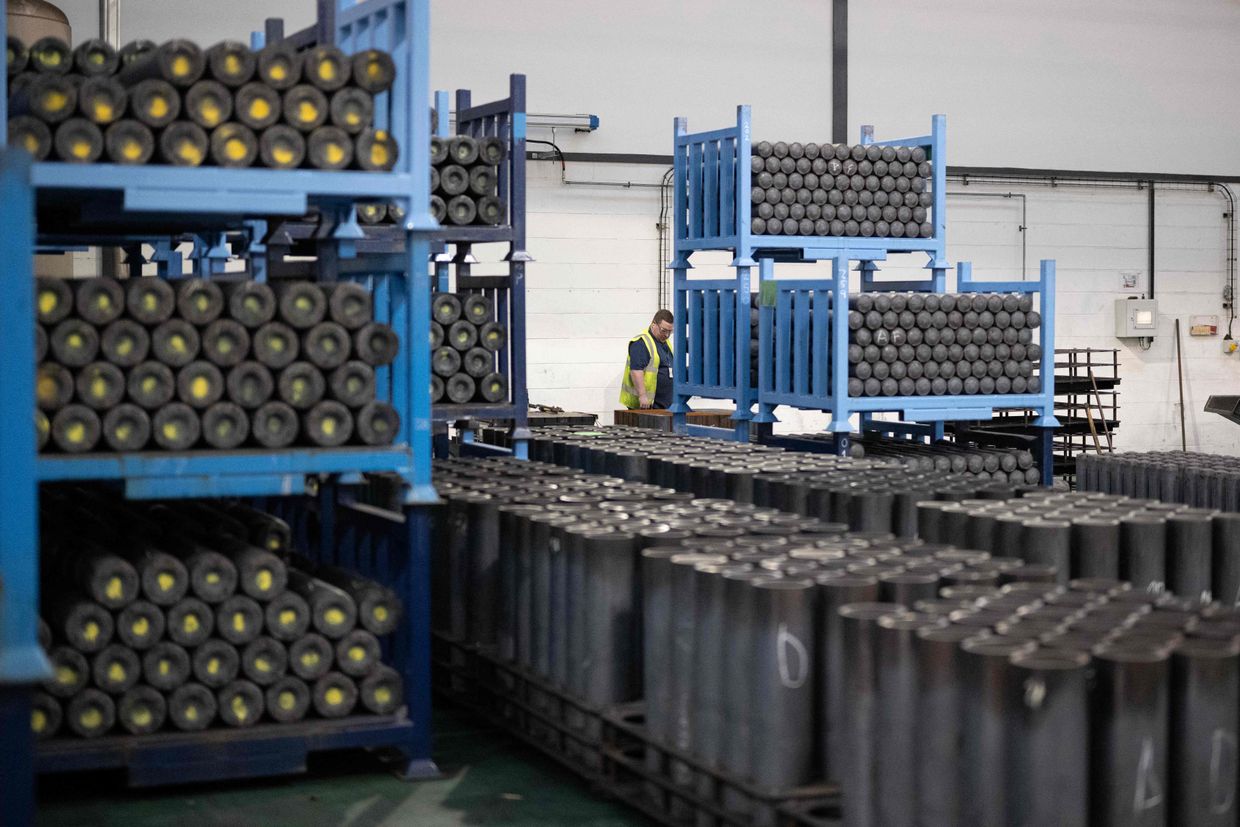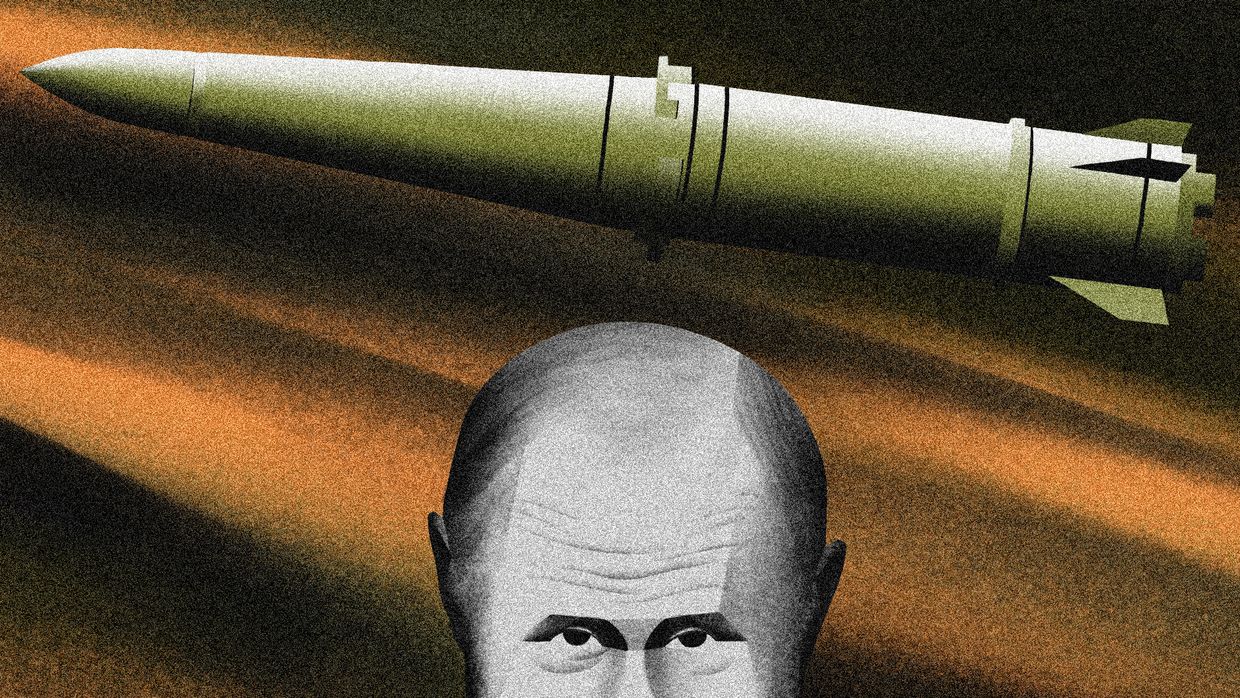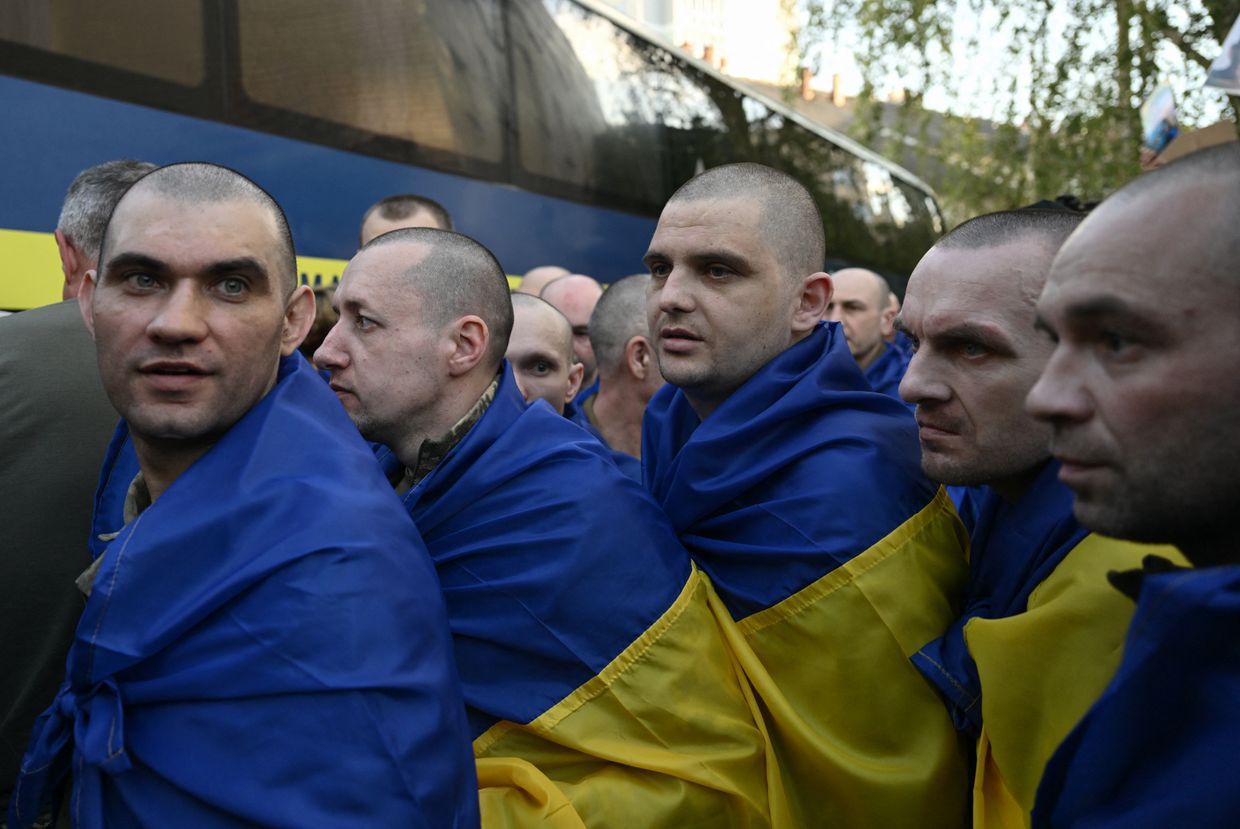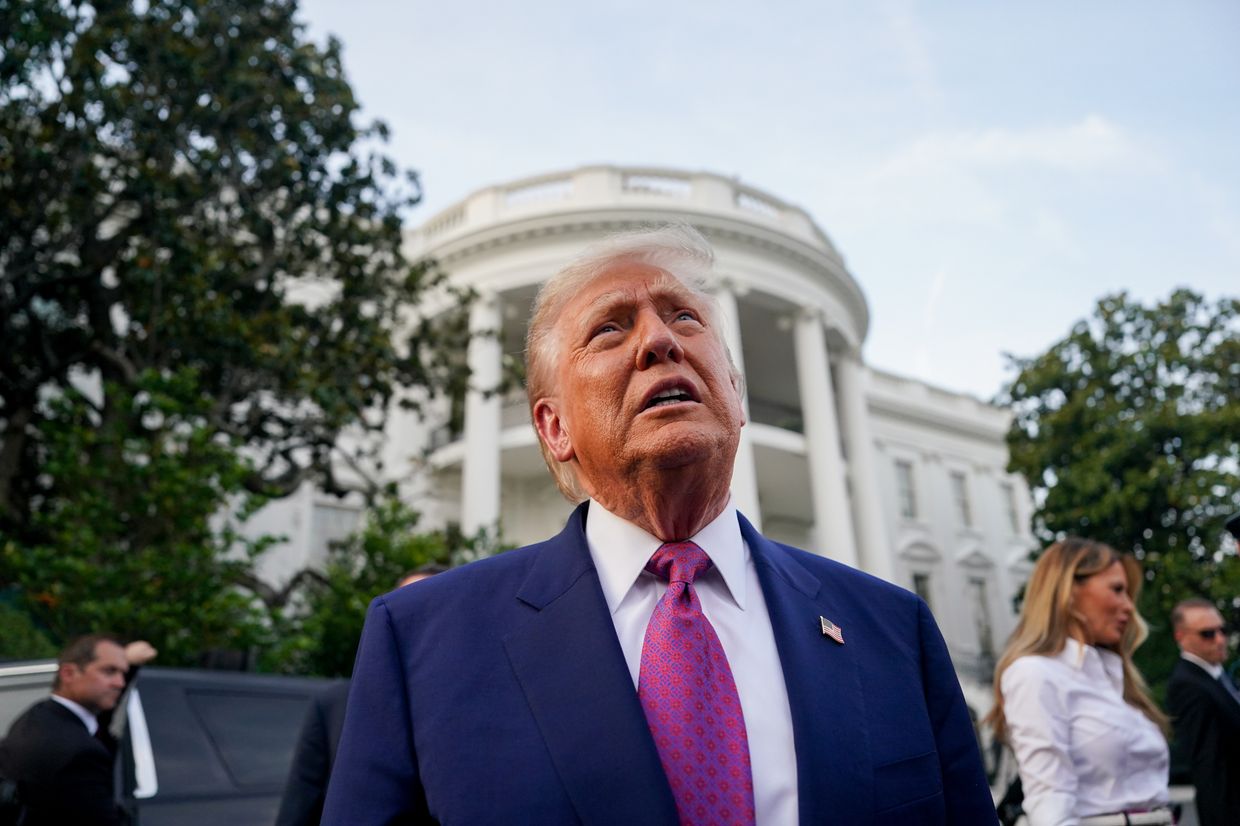Ukraine’s surprise incursion into Russia’s Kursk Oblast over the past week is lifting some hopes for Ukrainian soldiers losing ground on the eastern front amid worsening manpower and ammunition shortages.
Ukraine launched its stunning counterattack in the northeast into Russian territory 10 months into Russia’s renewed large-scale offensive across Donbas, where Kyiv's troops are clinging on to each position at a great cost as they attempt to grind down Moscow's offensive capabilities.
“(The Kursk operation opened) a new section of the front,” said Oleksandr Maroshnyk, a 32-year-old Ukrainian soldier deployed on the Chasiv Yar front with the 93rd Separate Mechanized Brigade.
“Russia will either redeploy troops or take from its reserves, which should reduce the pressure (upon Ukrainian forces) on other sections of the front.”
The Kursk operation, which has been followed up this week by Ukrainian incursions into the adjacent Belgorod Oblast of Russia, adds to Kyiv’s relentless long-range missile and drone strikes all the way down to the far south in Russian-occupied Crimea. As Russia presses on weak spots in Ukraine’s defense of Donbas, Kyiv is exposing Moscow’s vulnerabilities in the south, northeast, and now on Russian soil.
A 24-year-old drone operator from a reconnaissance unit also in Donetsk Oblast named Kostiantyn, who – like some other soldiers – asked for his identity not to be revealed due to security protocols, said that the Kursk operation offered “a distraction from the front line” in the east.
It could also be, he added, an effort by the Ukrainian government to shift the media’s attention from the rapidly degrading situation in the east or help alleviate some stress from other fronts that are bearing the brunt of intensifying Russian offensives.
Russian President Vladimir Putin called the Kursk incursion Ukraine’s attempt to halt Russia's offensive in Donbas, claiming that the Kremlin's push has only increased instead and that its troops were still advancing across the front line.
“The enemy seeks to improve its negotiating position in the future,” Putin said at a meeting with top defense officials on Aug. 12, dismissing any prospects of peace talks.
On Aug. 12, nearly a week into the operation, Commander-in-Chief of Ukraine’s armed forces Oleksandr Syrskyi said in a first public acknowledgement of the cross-border maneuver, that Ukraine currently controls about 1,000 square kilometers in Kursk Oblast.
The area is equivalent to the Kyiv-based investment bank Dragon Capital’s estimate of the territories Russia has captured since it began a large-scale offensive in October 2023.

Ukraine has regularly targeted Russia’s expensive air defense systems and its Black Sea Fleet in Russian-occupied Crimea since August 2022 in an attempt to neutralize the military threat.
Kostiantyn called Ukraine's operation to disrupt Russian military capabilities across the peninsula “a very clever tactic,” and a strategic move to strike behind the enemy lines before giving Russia the opportunity to attack.
“It is all about winning and putting off time,” Kostiantyn said. “It is understandable that (Russian troops) need a certain amount of time to repair (the damages), but over this certain time, we will be able to take some actions.”
Experts said more time is needed for the effects of Ukraine’s incursion into Russia and the strikes on Crimea to be felt on the battlefield. But the recent incursion and attacks on Crimea highlight how Kyiv, outnumbered and outgunned by Moscow’s larger army, is keen to break the enemy's ability to stretch Ukrainian forces by attacking from three sides: north, east and south.
Kostiantyn also believes the Kursk operation could compromise Russia's offensives in Ukraine's nearby Kharkiv Oblast in the northeast. Moscow’s troops opened a new front in a similar surprise attack in May that caught Ukraine off guard and further stretched its forces.
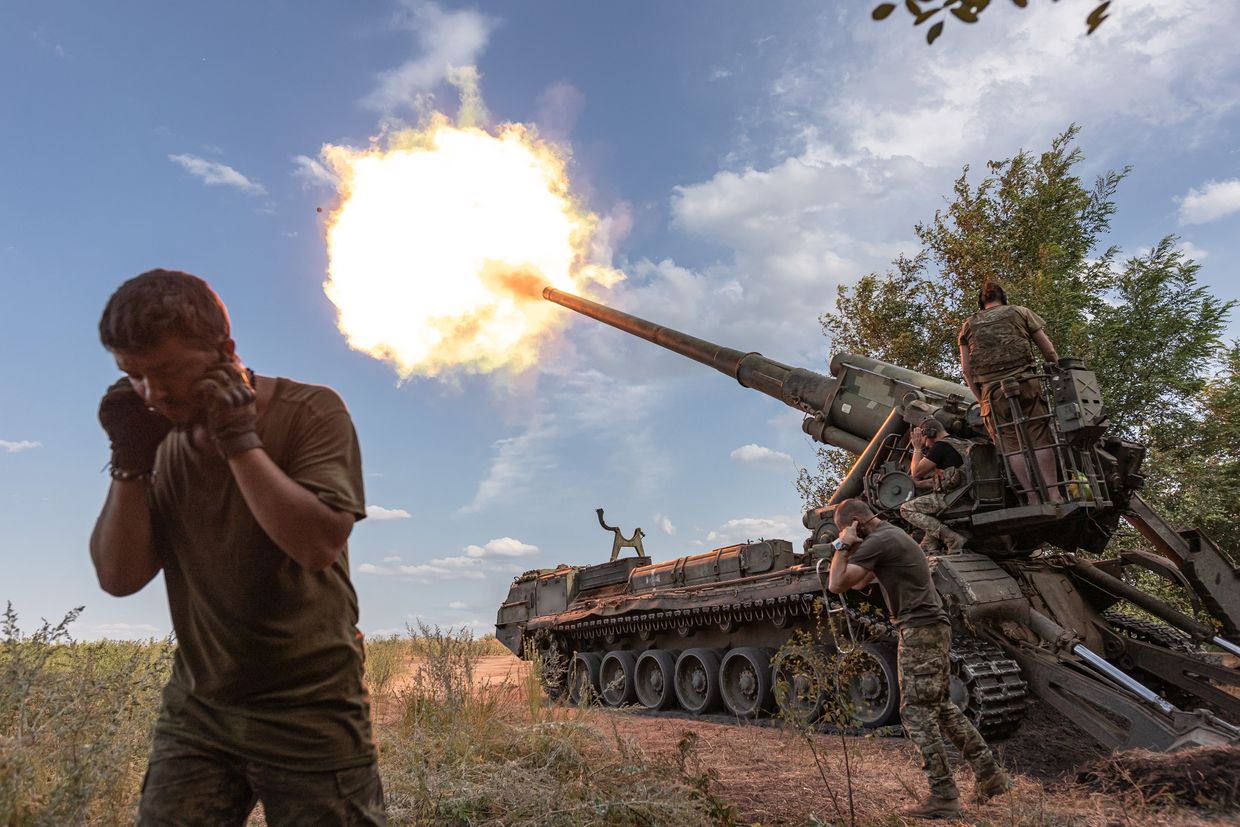
Estonian intelligence assesses that the Kursk incursion may force Russia to redeploy troops from other sectors, with the attack likely coming “as a surprise” for Moscow.
Russia’s Defense Ministry on Aug. 9 said it was sending additional military equipment, including multiple rocket launchers, artillery, tanks, and vehicles to reinforce the areas around the Kursk Oblast town of Sudzha. A day later, Russian authorities introduced a so-called "counter-terrorism operation" in bordering Kursk, Bryansk, and Belgorod oblasts in response to the incursion.
Moscow claimed on Aug. 11 that it had repelled a Ukrainian armored assault near Kursk Oblast villages over 30 kilometers deep into Russian territory. Ukraine currently controls 28 settlements in Kursk Oblast, acting regional governor Alexey Smirnov said on Aug. 12, claiming that the incursion is 12 kilometers deep and 40 kilometers wide.
Referring for the first time to the cross-border operation, President Volodymyr Zelensky said on Aug. 10 that Syrskyi had briefed him multiple times over the day “on our actions to push the war out into the aggressor's territory.”
“Ukraine is proving that it really knows how to restore justice and guarantees exactly the kind of pressure that is needed – pressure on the aggressor,” Zelensky said in an evening address, thanking the combat units involved in the high-stakes operation.
Russia would want to keep as much of its reserves in the east and “not overspend” on Ukraine’s Kursk incursion, which would depend on “how destructive” the raids on Kursk Oblast will be, according to Serhii Kuzan, co-founder and chairman of the Ukrainian Security and Cooperation Center.
Some Russian forces, Kuzan added, are already being transferred from the Kharkiv and Chasiv Yar fronts, but Moscow "clearly" wants to keep the offensive intensity in Donetsk Oblast. He believes that the Pokrovsk front – where Russian troops are advancing at the fastest pace across the entire 1,000-kilometer-long front – would be the last place where Moscow would want to pull its troops from.
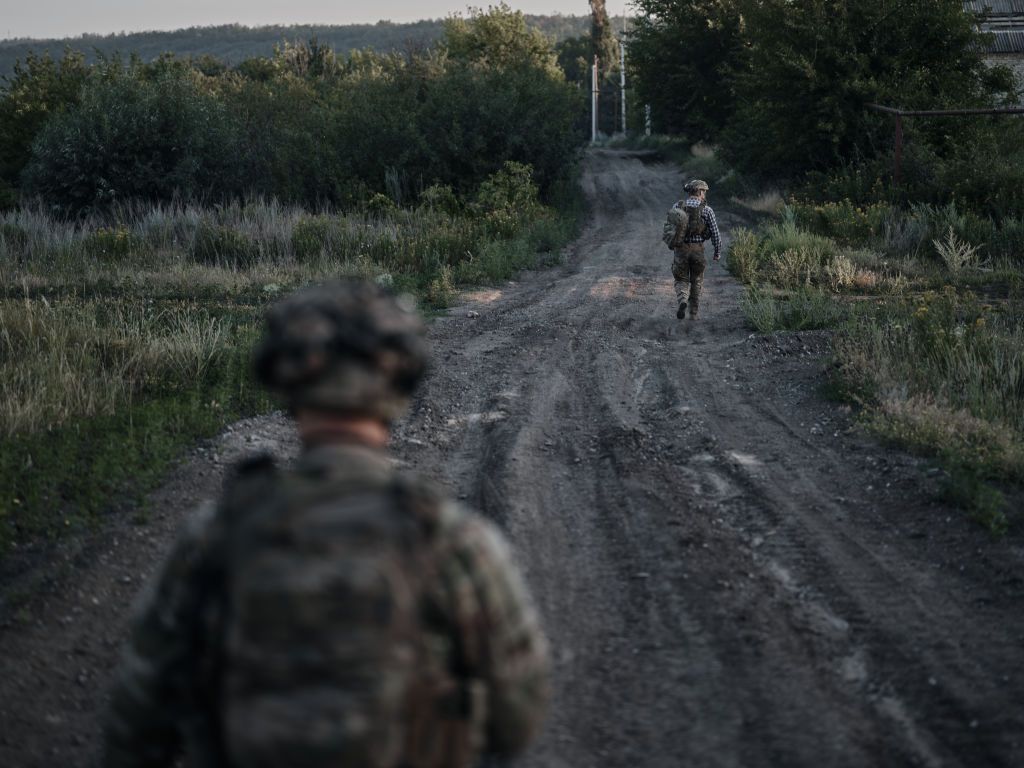
“In the coming days, everything will depend on what decision Russia’s military and political leadership make, whether they are ready to sacrifice a part of Kursk Oblast for the sake of Donetsk Oblast,” Kuzan said.
Meanwhile, by using long-range missiles and drones to attack Russian military assets in Russian-occupied Crimea, Ukraine has scored some tangible results on the peninsula.
Ukraine's Navy claimed in June that a third of the Black Sea Fleet had been “destroyed or damaged,” with the last Russian Black Sea Fleet patrol ship having left the peninsula occupied since 2014.
The constant threat to Crimea has forced Moscow to deploy more air defense systems to the peninsula’s east to protect the Crimean bridge, leaving cities such as Sevastopol and Yevpatoria more vulnerable, according to Dmytro Zhmaylo, co-founder and executive director of the Ukrainian Security and Cooperation Center.
“We are at war with Russia at a strategic level, and in order to win at the front, we have to move the war to Russian territory as much as possible, thus disrupting logistics,” Zhmaylo said. He acknowledged that it is “a very long job” with results not yet visible.
“Otherwise, we simply cannot hold the defense,” Zhmaylo added, referring to the deepening Russian advance across the Donbas front line.
Russia has captured “a mere 1%” of Ukrainian territory over the offensive between October 2023 to June 2024, but it is expected to hold the near-term initiative considering “its significant manpower and firepower superiority,” according to a report by Dragon Capital.
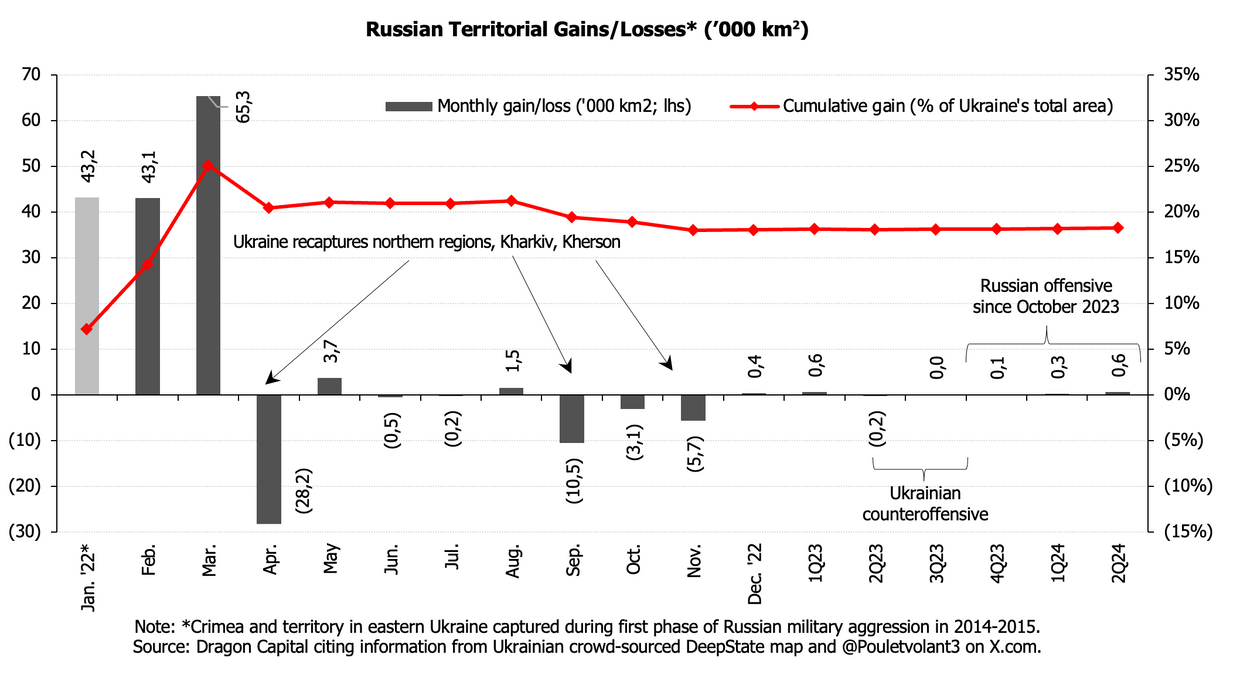
While breaking this Russian advantage and neutralizing the threat of attacks from the southern peninsula remains the near-term goal, Zhmaylo suggested that liberating Crimea under the current conditions is more realistic than liberating occupied territories in the country’s east and south, echoing Ukraine's military intelligence chief Kyrylo Budanov’s assessment.
“We did the same thing when we received HIMARS, and for several weeks, we methodically destroyed ammunition depots, destroyed control points, destroyed routes in Kherson Oblast, and destroyed the Antonivsky bridge,” Zhmaylo said.
“When the logistics were disrupted, the lack of weapons, ammunition, food, water, operational supply of reserves and everything necessary began to be felt – that's when we were able to liberate our territories on the right bank of Kherson Oblast,” the analyst added. Ukraine’s successful 2022 counteroffensive in the area sent Russia’s forces fleeing the western bank of the oblast across the Dnipro River.
Ukraine has twice in the past two and a half years of the war tried to blow up the Kerch Bridge, which Putin built after illegally annexing Crimea to serve as a key supply line to connect it with Russia’s Taman Peninsula.
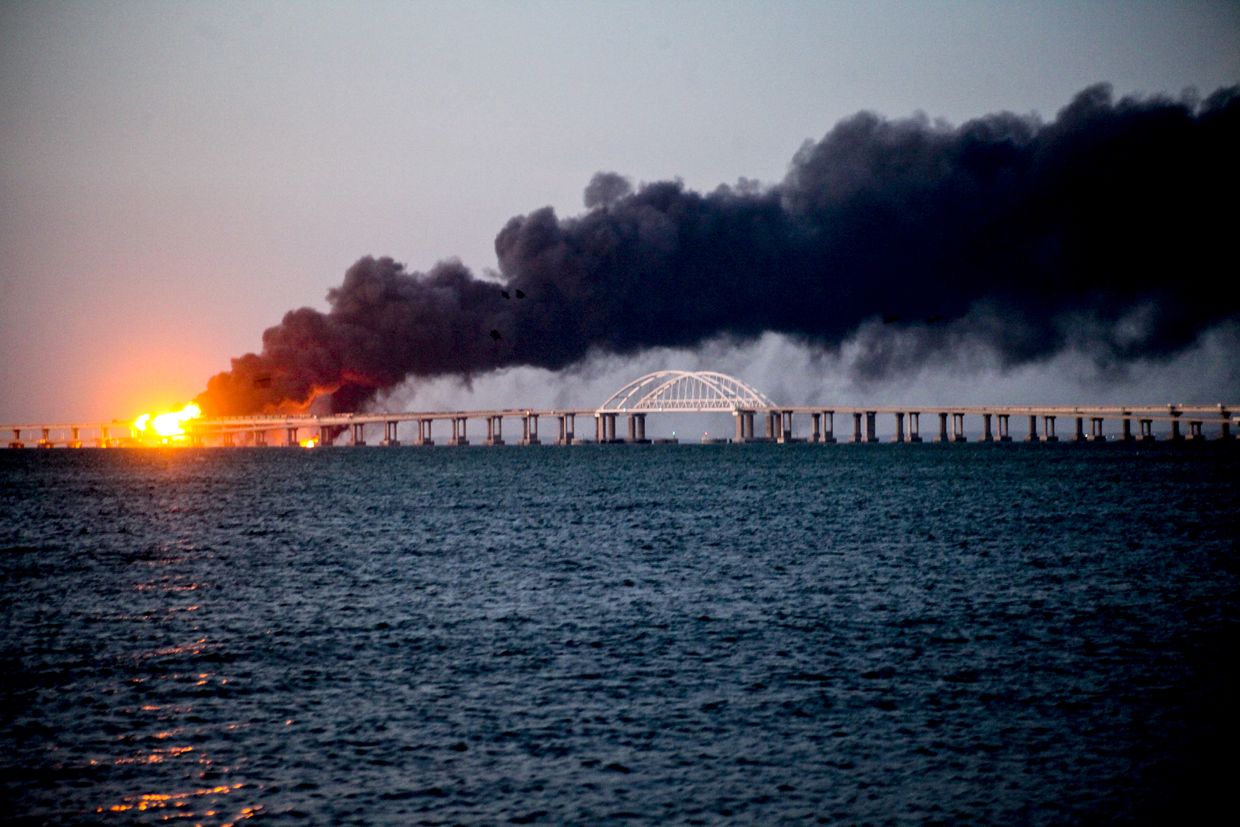
Budanov, who heads Ukraine's military intelligence (HUR), suggested in a recent interview that Ukraine has “chances” of destroying the bridge in the coming months.
Serhiy Hrabskyi, a Ukrainian military analyst and former colonel, agreed that Crimea is Ukraine’s top priority, explaining that “it is impossible to talk about the end of the war” without the possible liberation of the peninsula.
But he stressed the importance of holding off seemingly endless Russian assaults in Donbas, trying to make it as costly as Russia to advance every kilometer while it holds the advantage. Ukraine also needs to “win time” to replenish the losses in battle-torn units and wait for the arrival of Western military aid, according to Ukrainian and Western military analysts.
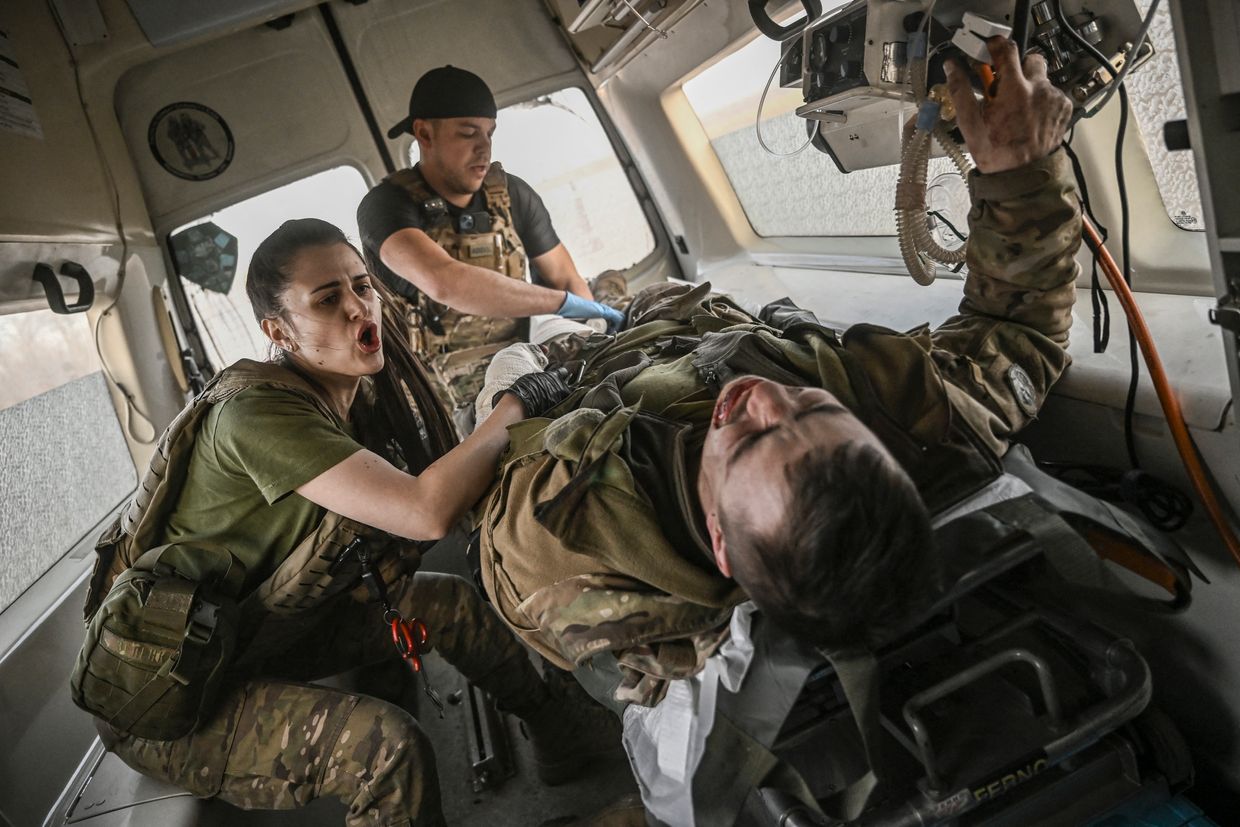
Deepening Russian advance
Experts and Ukrainian officers acknowledge a manpower shortage as the most critical issue on the front line. Ukrainian artillerymen, mortarmen, and tank crews from multiple brigades told the Kyiv Independent that they also face a critical deficit of artillery shells.
While Ukrainian troops advancing into Kursk have reportedly expressed strong morale, some of Ukraine’s exhausted soldiers on the Donbas front lines are withdrawing little by little and struggle to see the future when so many of their friends have been killed in action.
Ihor, a 35-year-old soldier with the 93rd Separate Mechanized Brigade deployed on the Chasiv Yar front, said he is convinced that he and his comrades are “consumable materials” for the leadership to hold the front at any cost.
Of the 105 men in his infantry company, Ihor says that only three survived the year-long deployment on the zero line in the Chasiv Yar sector in eastern Donetsk Oblast. The rest were killed, wounded, or missing in action.
“There is no other way out (from the position). You go there, and you die,” said Ihor, who spoke up for his fallen comrades, “many” of whose bodies could not be retrieved.
“For what have been fighting? Twenty-seven months and what did we get? Nothing. And we won't get anything,” Ihor continued. “I don’t know what is happening here.”
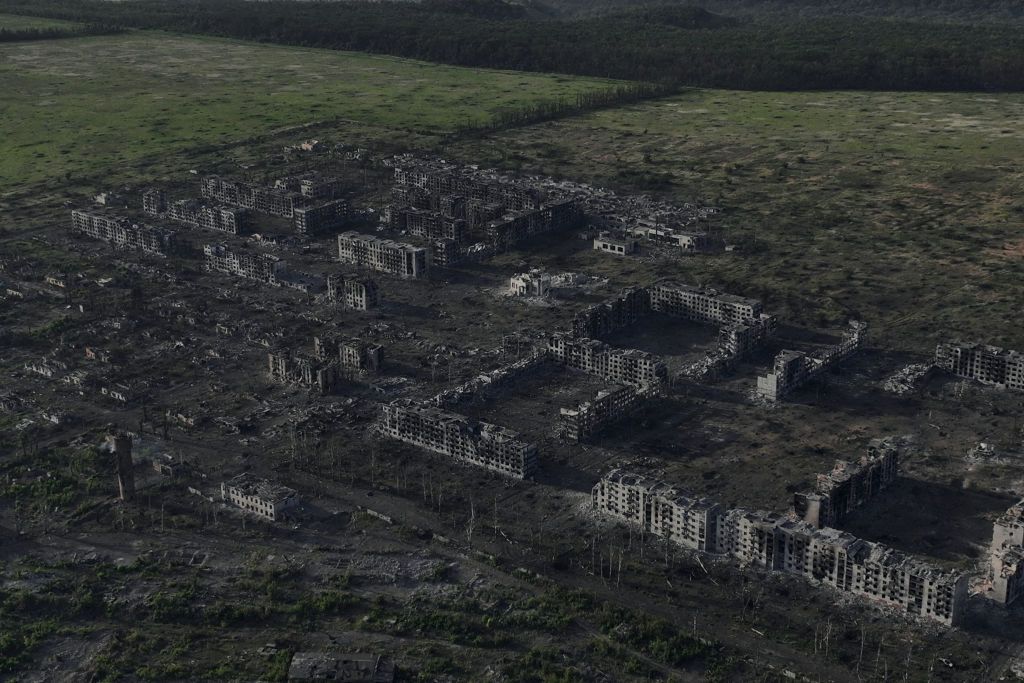
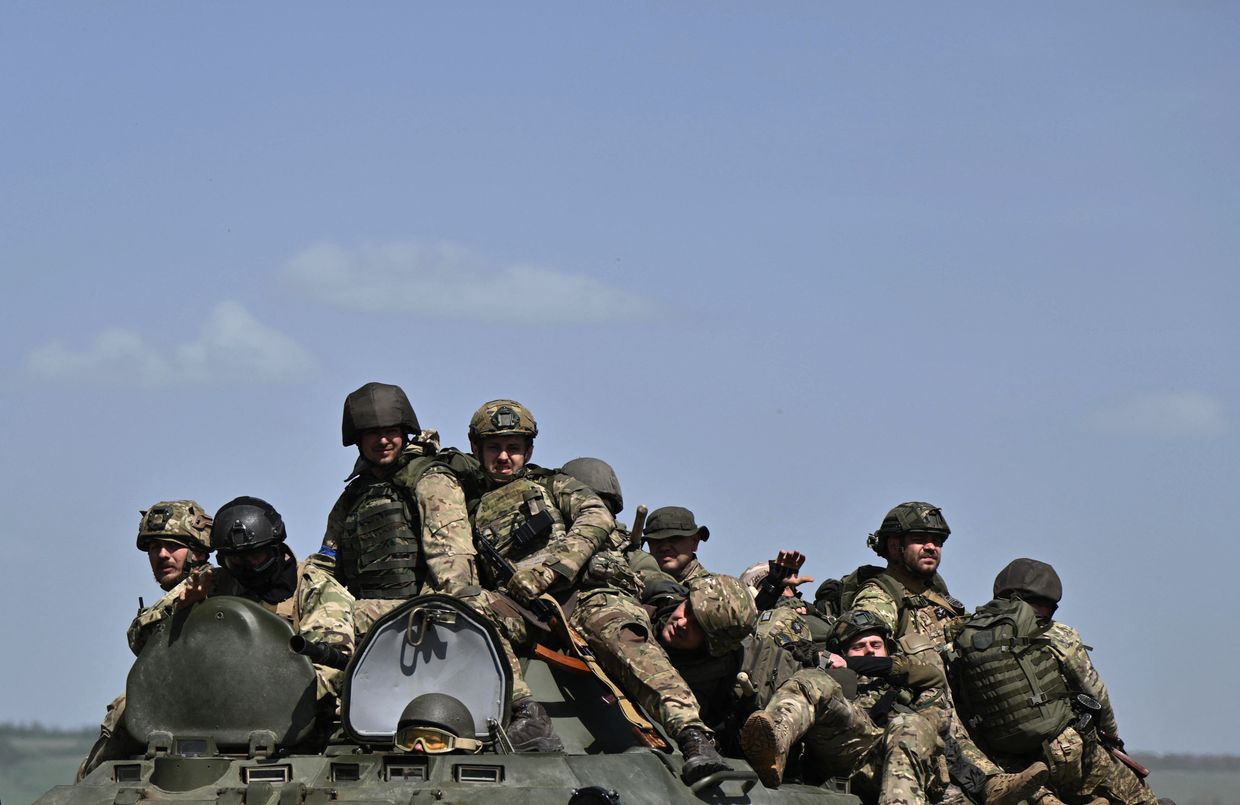
Chasiv Yar is among the three axes of the front line that has borne the brunt of Russia’s 2024 offensive. Russian troops reached the canal dividing the Ukrainian and Russian-controlled territories in the hilly town this spring and have been trying to advance past the natural barrier since then.
About 40 kilometers southwest of the battle for Chasiv Yar, Russian forces are inching closer to Ukraine’s main logistic artery, which connects the upper part of Donetsk Oblast with the logistic hub of Pokrovsk and cities to the west.
After capturing the small industrial city of Avdiivka in February, the advancing Russian army has seized over a dozen villages and are only about five kilometers from reaching a highway that serves as one of several key supply routes in the region for Ukraine’s forces.
And almost at the midpoint of those two battles, Russia began a new offensive on Toretsk in June, taking advantage of a poorly conducted rotation that pulled out a more experienced brigade to reinforce Chasiv Yar. The Russian Defense Ministry said in August it captured Niu York, a village just south of Toretsk, a claim refuted by Ukraine.
“The problem is if tactical mistakes happen, the lack of manpower means that it's more difficult to compensate and to prevent Russian advances from advancing further than they would otherwise,” said Rob Lee, senior fellow in the Foreign Policy Research Institute's Eurasia program.
But analysts believe Russia’s resources will eventually run out. Ukrainian military experts have estimated the ratio of personnel losses to range from one to three to one to 10, depending on the intensity of the Russian offensive in each section of the front.

“Russian offensive potential will most likely decline in 2025, but when that happens is not fully clear … for the time being, Russia is still advancing, and it's clear that Ukrainian units are stretched,” said Lee.
“Our task is to inflict maximum damage on (Russian troops), that is, to destroy them as much as possible on the battlefield,” Serhii Kuzan, co-founder and chairman of the Ukrainian Security and Cooperation Center, said. “And the more we destroy now, the faster they will feel their losses in the next 2025 year.”
“The damage that we inflict (on Russian troops) with minimal resources is the biggest damage over the span of the war,” added Kuzan, who was an advisor to the Defense Ministry from 2022 to 2023. “(If we continue with this tactic), the Russians will not be able to maintain the war at this pace.”
But not being able to see the end, some soldiers are increasingly pessimistic about the fate of Donetsk Oblast cities, towns, and villages. The fate of these will be decided by how quickly Ukraine can improve its manpower shortage, ammunition, weapon, and equipment deficit.

Oleksandr Danylyuk, an associate fellow at the Royal United Services Institute (RUSI), underscored that “manpower without weapons and military equipment has no meaning.”
“The combat effectiveness of units depends not only on their number, but also on the level of provision of military equipment,” the expert on Russian multidimensional warfare wrote in an August article.
Danylyuk, who served as the Chief Advisor to Ukraine's Defense Ministry in 2014, explained that there are over 30 territorial defense brigades, only equipped with small arms and mortars, that are yet to show potential. He added that 14 reserve brigades also lack heavy weaponry due to military aid delivery delays, and they are yet to be deployed in combat zones.
“Everything depends on the supply of both human and technological resources. As of now – everything is very bad with the supply,” said Maroshnyk, fighting on the Chasiv Yar front with the 93rd.





